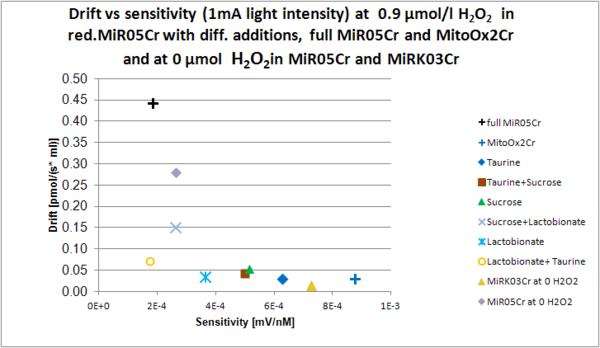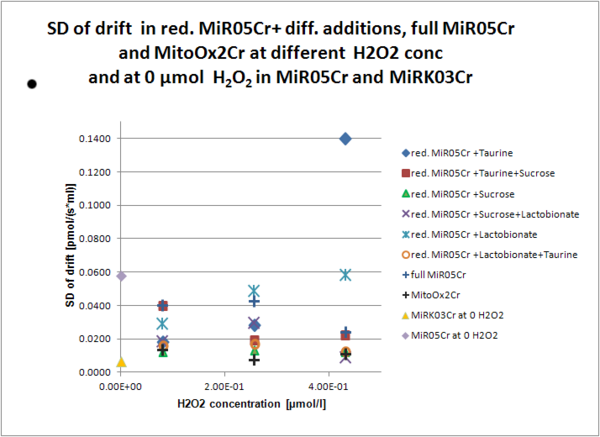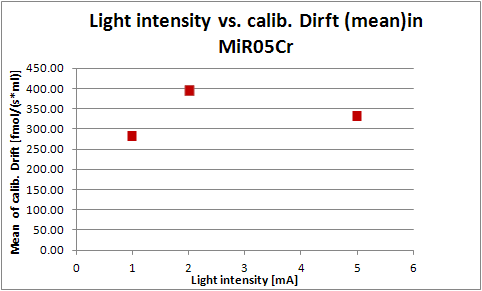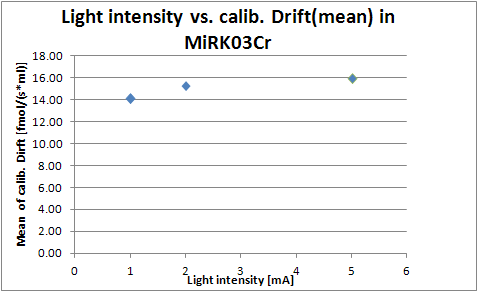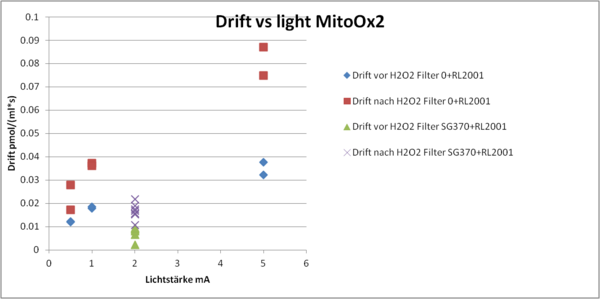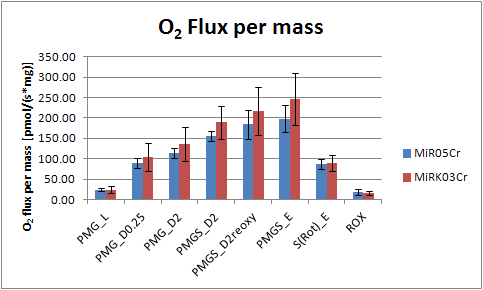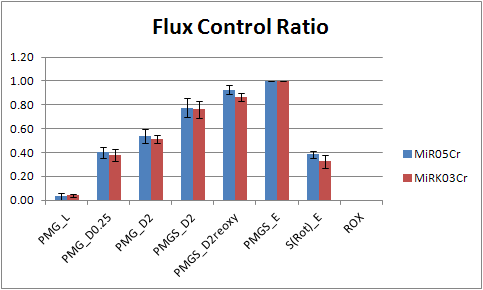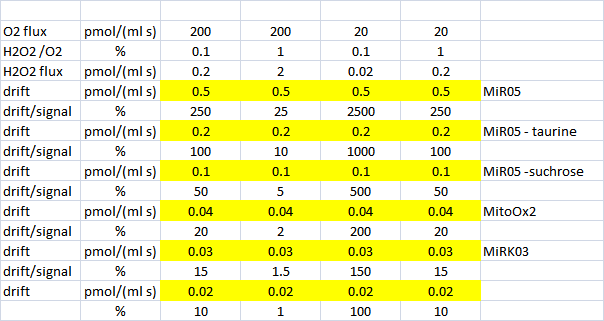Talk:Amplex UltraRed
Different Brands
| Trade Mark | Manufacturer/ Distributor | price [€/mg]
|
product id
|
| Amplex Red | 37.4
|
A12222
| |
| Amplex Ultra Red | 48.8
|
A36006
| |
| Ampliflu Red | 18.5
|
90101
| |
| Quanta Red | 15150
|
Conditions
| Citation | Amplex | HRP | pH | Limit of detection | |||
| stock | final | unit definition | stock | final | |||
mM
|
µM
|
U/ml
|
U/ml
|
||||
| BIOTEK | 10
|
50
|
pyrogallol
|
10
|
0.1
|
7.4
|
4 nM (absorption 300 nm)
|
| INVITROGEN | 10
|
50
|
10
|
0.1
|
6 to 7.5
|
<80 nM
| |
| Towne 2004 | 160
|
0.41
|
7.5 to 8.5
|
100 nM
| |||
| Zhou1997 | 3 ?
|
0.3 to 1
|
50 nM (10 nM optimal)
| ||||
| Mohanty1997 | 100
|
10 to 100
|
1
|
18 nM
| |||
| Komary2010 | 1
|
2.5
|
|||||
As a starting point for the development of our own application protocols (see Krumschnabel 2014 Methods Mol Biol, MiPNet19.20) we at Oroboros Instruments used two publications from Prof. Tretters OROBOROS MiPNet Reference Laboratory as a starting point for our development: Tretter 2012 Free Radic Biol Med and Komary 2010 Biochim Biophys Acta.
Media
see Krumschnabel 2014 Methods Mol Biol.
Media that were designed to have some antioxidant properties will frequently consume H2O2 before it can react with Amplex (R) (Ultra)Red to form the active fluorophore resorufin. This can be shown by comparing
- the sensitivity as determined by H2O2 additions to different media containing HRP and Amplex (R) UltraRed
- the sensitivity as determined by addition of the actual fluorophore resorufin to the same media (signal change per added resorufin)
(Sensitivity is signal change per added H2O2 or resorufin.)
While the sensitivity measured by the addition of H2O2 drops drastically from a simple phosphate buffer to media with strong antioxidant properties, this is not observed when the sensitivity is determined by the addition of resorufin.
Since the non biological drift always observed for the Amplex /HRP system is independent of the sensitivity versus H2O2 the same (absolute) drift expressed as (calibrated) "apparent H2O2 production" will be higher in a medium with low H2O2 sensitivity as compared to a medium with high H2O2 sensitivity.
As expected some traditional KCl based media, similar to those used in ... showed a far higher sensitivity against H2O2 addition than MiR05, while some experiments indicated a lower respiration.
Comparison MiR05Cr to MiRK03Cr
Conditions: Instrumental settings:
- Amp.Gain 1000
- Light intesity variable 1mA, 2mA and 5mA
- Configuration O2K -Sensor always the same: Oxygraph AB: Sensors B-0111/B-0082 Oxygraph CD: Sensors B-0119/B-0117 Oxygraph EF: Sensors A-0004/B-0112 Oxygraph GH: Sensors A-0087/A-0088
Media: MiR05Cr and
MiRK03Cr:
KCl 130 mM, HEPES free acid 20 mM, KH2PO4 10 mM, MgCl2 3 mM, EGTA 0.5 mM, BSA : 0.1%, pH=7, add 120 mg Creatine to 40 ml buffer
Titration:
10 µl Amplex UltraRed (conc:1 mM -> 5 µMl in chamber) 4µl HRP (conc:500 U/ml -> 1 U/ml in chamber) 2*10 µl of 56,32 µM H2O2 solution
Results/Figures:
Drift vs Sensitivity:
Fig.6
Fig.7
--> Drift and sensitivity at least as good as MitoOx2 (=MiRK02)
Drift vs light intensity
Fig.14 and Fig. 15
--> MirK03, MiR05: drift not dependent on light intensity ( 1 to 5 mA)
compare to "MitoOx2":
Evaluation of respirometry in MiR05Cr versus MiRK03Cr (N=2):
Titration:
10 µl Amplex UltraRed (conc:1 mM -> 5 µM in chamber) 4µl HRP (conc:500 U/ml -> 1 U/ml in chamber) 2*5 µl of 28.16 µM H2O2 solution : 0 µM, 0.07040 µM, 0.1406 µM
Fig.16 and 17
To do:? with switched chambers with and without Creatine in low light intensity
Fontanam 16:22, 6 August 2013 (CEST)
Popular Bioblast page
Amplex red has been accessed more than
- 5,000 times (2014-05-29)
